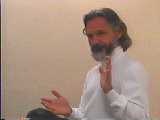 |
|||||||||||
 |
|||||||||||
 |
|||||||||||
 |
|||||||||||
 |
|||||||||||
 |
|||||||||||
 |
|||||||||||
 |
|||||||||||
 |
|||||||||||
 |
|
|
|
|
||||||||||||||||||||||||
|
What is Problem-Based Learning? Problem-based Learning is an approach to learning in which problems serve as the stimulus for students to gain course concepts and content as well as metacognitive skills. Generally PBL problems are ill-structured, based on real situations, and have more than one right answer. In the PBL environment, students confront a problem before they receive all the information necessary to solve it. Students work in teams to define the nature of the problem, to identify what additional resources they need, and to find viable solutions. Faculty members act as facilitators by asking questions and monitoring group processes as students actively pursue viable solutions. Faculty members also guide students to resources. Students must generally reapply the new knowledge to the original problem and communicate the results of their findings. Among the anticipated outcomes of PBL are enhanced critical-thinking and problem-solving skills, research skills, communication skills and content knowledge. (Major, 1999, p.7) As this definition indicates, PBL is a comprehensive approach to teaching and learning which alters the roles of teachers and students. Students assume greater responsibility for inquiry into the subject matter in order to solve or resolve complex problems. The teacher puts greater emphasis on guiding and coaching the problem solving process rather than just giving students information or answers to questions. For an extensive comparison of PBL to other types of teaching approaches see http://www.imsa.edu/team/cpbl/whatis/matrix/matrix2.html which is part of the Center for Problem-based Learning site at the Illinois Math and Science Academy, http://www.imsa.edu/team/cpbl/cpbl.html PBL has a well established tradition in medical education and has been adopted in other fields of study and at all levels of education. For additional information about PBL consult the following. Dan Schwartz, of Vanderbilt, uses PBL in his educational psychology class. A paper about the approach is here. What he does in his class builds off of the PBL model the Vanderbilt group has developed for K-12. Major, C. (1999). Connecting what we know and what we do through problem-based learning. AAHE bulletin, 51(7), 7-9. Wilkerson, L. & Gijselaers, W.H. (1996). Bringing problem-based learning to higher education: Theory and practice. New directions for teaching and learning. San Francisco: Jossey Bass. For an extensive online bibliography of material about PBL see http://www.newcastle.edu.au/services/iesd/learndevelop/problarc/bibliography.html which is part of the Problem-Based Learning and Assessment Research Centre (PROBLARC) site at the University of Newcastle, Australia, http://www.newcastle.edu.au/services/iesd/learndevelop/problarc/ Two www sites that include links to PBL resources around the world are Samford University at http://lr.samford.edu/PBL/index.html and the University of Delaware http://www.udel.edu/pbl/ |